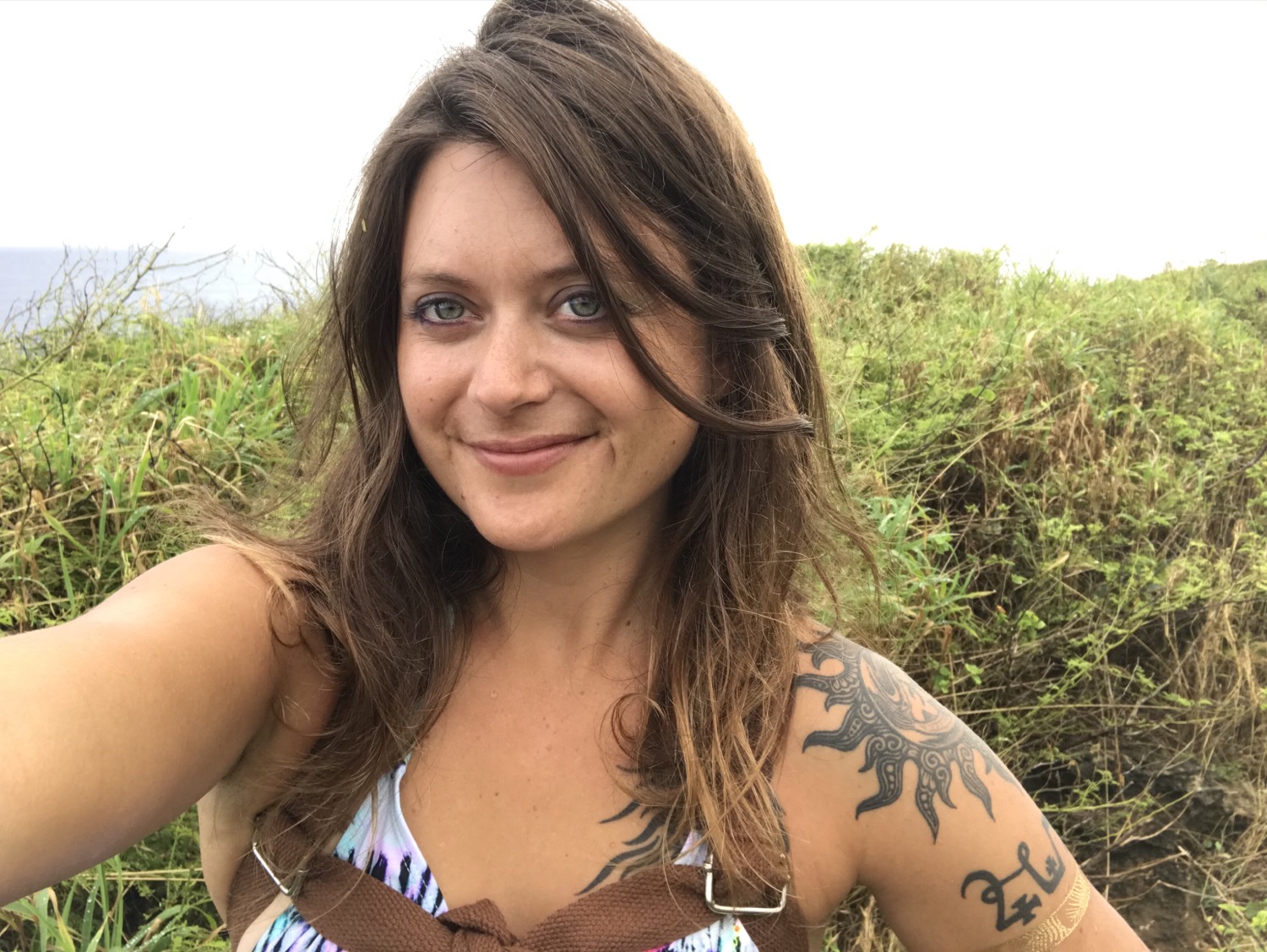Mokule'ia Beach
- Stephanie Maher

- Jul 27, 2022
- 4 min read
Dive the right way!

We arrived around 7:30am and we had great parking along the viewpoint of the beach.
The beach is surrounded by cliffs and trees. The water was calm with little to no waves. The water looked clear from where we parked. We were at least 100 ft above the beach. The beach is named Slaughterhouse Beach because Honolua Ranch slaughterhouse and tanning/storage shed was situated near the cliffs edge. It was torn down in the 60s. The original Hawaiian name of the beach is Mokule’ia which sounds more pleasing, and it means “district of abundance”. It is part of the Honolua-Mokule’ia Bay Marine Life Conservation District. Fishing is not allowed in this preserve and touching or taking any marine life or shells is prohibited.

Mokule’ia Bay is a great place to dive and snorkel because there is indeed an abundance of life that resides in the area. When Chad and I took the steps down to the beach we immediately noticed dolphins swimming extremely close to the shoreline. There must have been at least 20 dolphins swimming from the south side of the beach to the north side toward Honolua Bay. They were jumping out of the water and spinning in the air! A snorkel tour boat was anchored just to the right of the beach and the snorkelers were lucky to see the dolphins.
It was a little difficult bringing all our dive gear down to the beach because of the long flight of stairs that winds down along the cliff edge. You can see signs by the stairs that advice visitors to respect and protect the coral reefs by refraining from stepping on the coral, touching the sea turtles, and wearing dangerous sunscreen such as the spray sunscreen that pollutes the air and bleaches the coral that contains oxybenzone and octinoxate.
When we suited up, we headed towards the beach and the entry was easy because the ocean was calm. In the winter, massive waves hit the beach. It is nice to take advantage of the good conditions of the changing nature preserve.
Before we entered, we had seen another diver attempt to get into the ocean. Chad and I witnessed her O-ring burst andher air from her tank leaked out in a hissing sound.
I asked Chad, “What would happen if I burst an O-ring underwater?” (an “O ring” stops the air from leaking out of the air tank)
“Just reach for my alternate regulator and we will slowly end the dive,” he said confidently.
A regulator is the mouthpiece connected to the hose that supplies the diver with air from the air tank. A diver typically has two regulators, the main one and the emergency one attached to the BCD, (buoyancy control device) which is the “vest” that holds that dive tank. It also has pockets that inflate and deflate with air giving the diver neutral buoyancy under the ocean. Diving can be a tricky thing and precautions should always be kept because anything could happen.
It felt like we were embarking on a real adventure because we were diving in an area that we never explored before, and we were trusting our instruments and fate to take us on a ride we would never forget.
We decided to dive along the northern part of the bay with the prominent basaltic rock wall that divides of Mokule’ia bay and Honolua Bay.
We made a surface swim over to the snorkelers that had jumped into the ocean from the big Catamaran. We descendant right under their feet! I could see their bare feet kicking above us as the they held on tight to their flotation devices.
I noticed Milletseed Butterflyfishes, also known as “lemon butterflyfishes” because of their bright yellow color and tiny black spots that line their flat round bodies. I could also see a group of five or six silvery Tarpon ranging between 4-5ft, hunting for smaller fish to dine upon.
The northside of the bay is stunning. The sun illuminated the basaltic rock and we noticed needle fish hovering peacefully in the protected areas of the rocks. Coral crunching parrot fish hid within the crevasses and coves indenting the basaltic rock. It is an underwater paradise.
We continued around the point that divides Mokule’ia bay and Honolua bay and noticed many turtles swimming in this area. The point was particularly fascinating because of the basaltic rocks at the depths reaching 40ft. The rock looked like huge fingers barely touching the surrounding pockets of sand. Our return to the shore was easy and relaxing because there was no current and we enjoyed the spectacular view of the many fish swimming and eating around the coral.
It was about 9am when we surfaced and already the beach was crowded with people! The beach reeked with sunscreen, and we could see many people using the prohibited spray sunscreen that kills sea life! It is heartbreaking! The smell made me cough and irritated my lungs. That’s why it is best to go to the beach sunrise or sunset to avoid the crowds and the nasty spray sunscreen pollution. The spray sunscreen and other toxic sunscreens are supposed to be illegal to sell in Hawaii but the big companies like Safeway and Walmart found loopholes. It is still being sold big time!
After the beautiful dive, I realized that it is true that wearing an ocean savvy rash guard and swimwear leggings is sexier than wearing a tiny bikini and sunscreen! Explore Mokule’ia beach the right way and embark upon a great adventure!


Comments